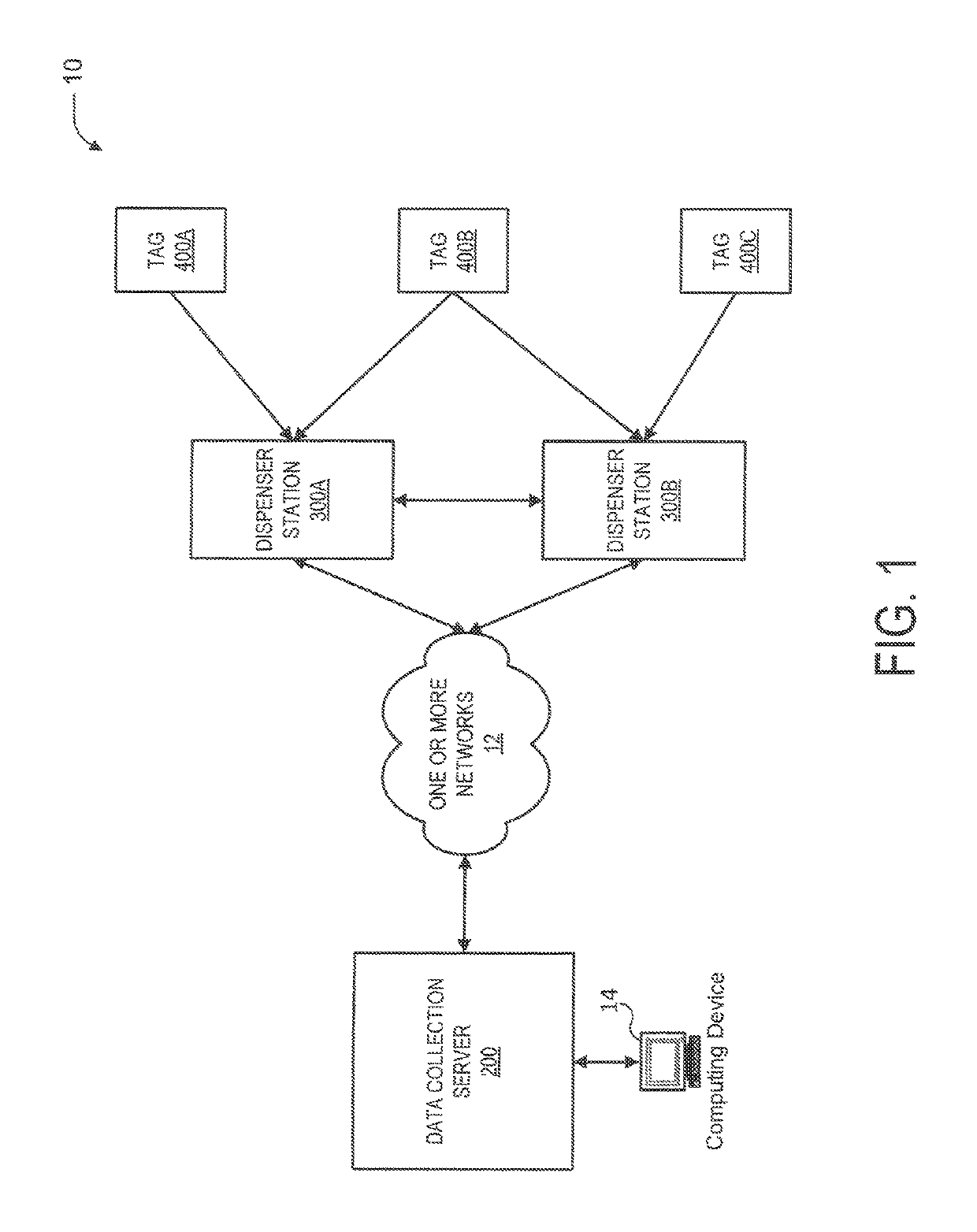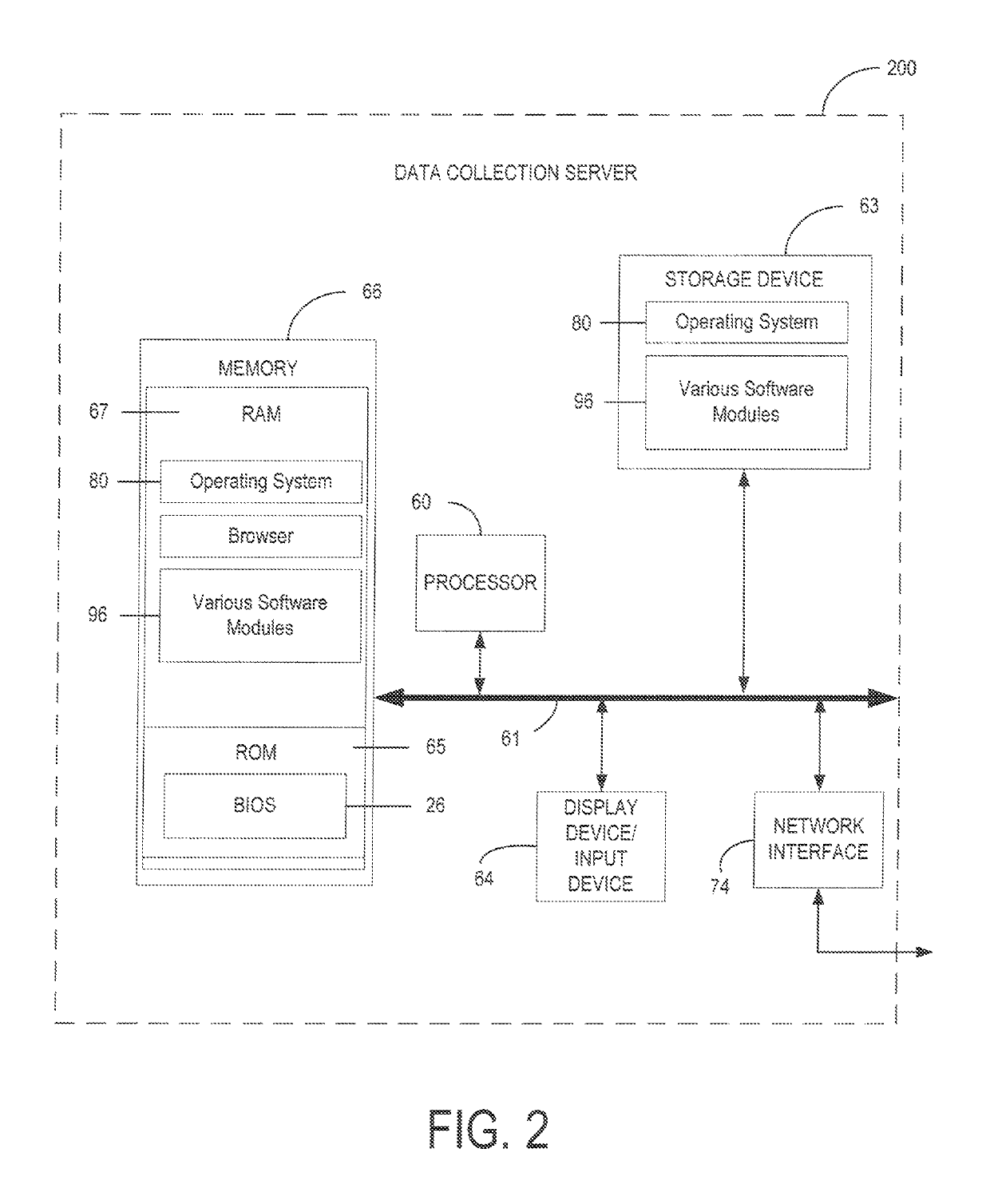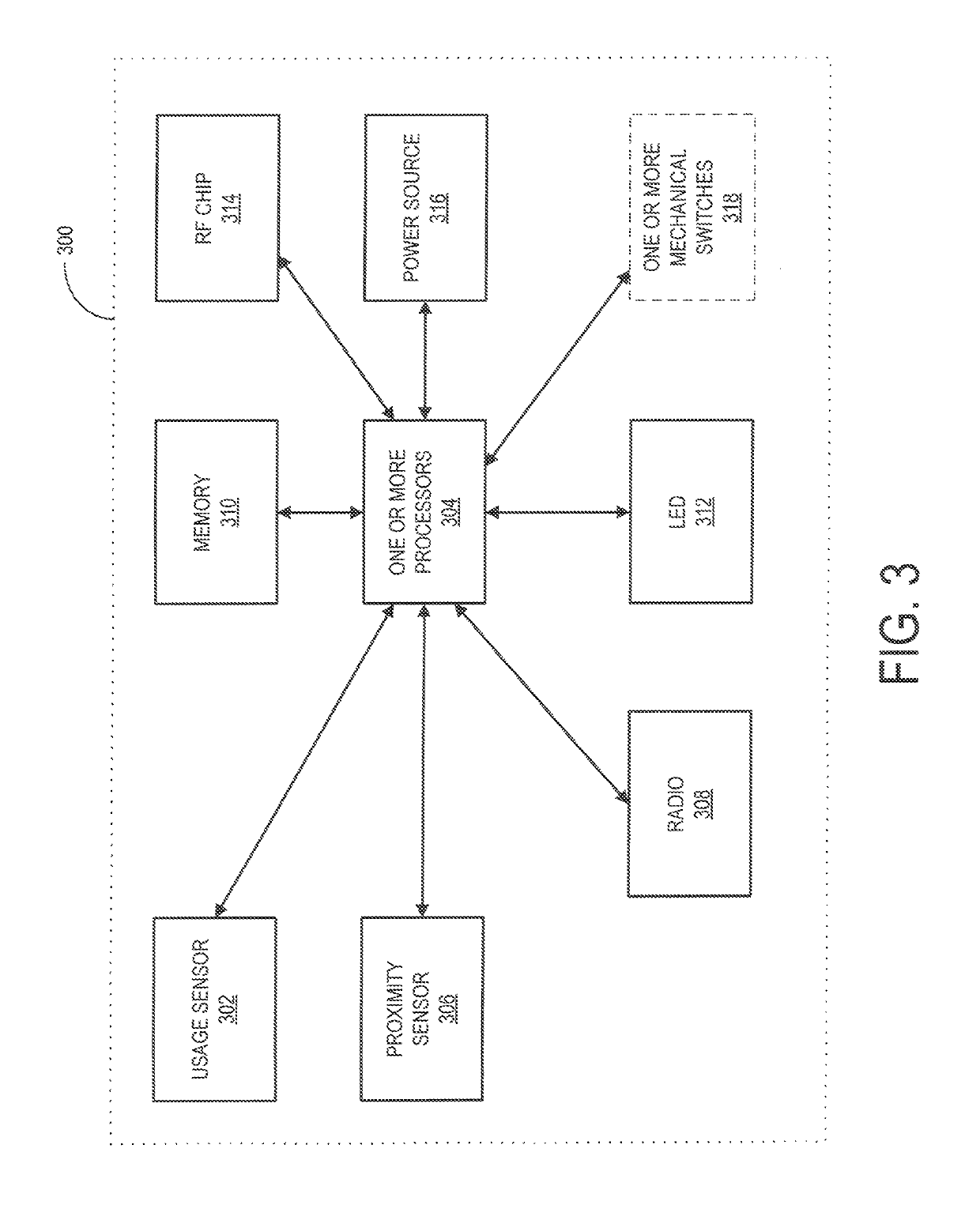[0004]Various embodiments of the present disclosure include a system for tracking and improving hand hygiene including: 1) at least one sensor for detecting when an action is performed to receive a hand hygiene product, the at least one sensor operatively coupled to at least one processor; and 2) a proximity sensor for determining when an object is within a predefined distance from a hand hygiene product dispenser, the proximity sensor operatively connected to the at least one processor, wherein the at least one processor is operatively configured to: A) receive, from the proximity sensor, a proximity indication that a particular object is within the predetermined distance; B) upon receiving the proximity indication, determining whether the at least one sensor detects the action to receive the hand hygiene product within a predetermined time period or process; and C) upon determining that the at least one sensor did not detect the action to receive the hand hygiene product within the predetermined time period, facilitating transmission of at least one message.
[0005]One or more embodiments of the present disclosure include a computer-implemented method for tracking and improving hand hygiene including providing: 1) at least one sensor for detecting when a user performs an action to receive a hand hygiene product, the at least one sensor operatively coupled to at least one processor; 2) an electromechanical usage sensor for detecting when the hand hygiene product is low, the electromechanical usage sensor operatively coupled to the at least one processor; and 3) memory operatively coupled to the at least one processor, wherein the at least one processor is configured for: A) upon receiving a notification from the electromechanical usage sensor that the hand hygiene product is low, transmitting, by the at least one processor, a low hand hygiene product notification; B) receiving, by the at least one processor, from an ultrasound proximity sensor, a proximity indication that an object is within a predetermined distance of the ultrasound proximity sensor; C) upon receiving the proximity indication, transmitting, by the at least one processor, a low energy Bluetooth broadcast; D) based on transmitting the low energy Bluetooth broadcast, receiving, by the at least one processor, one or more unique addresses; E) determining, by the at least one processor, whether the at least one sensor detects a user performing the action within a predetermined time period; and F) upon determining that the at least one sensor did not detect the user performing the action within the predetermined time period: i) facilitating, by the at least one processor, playing an audio indication for the user to perform the action; and ii) logging, by the at least one processor, the one or more unique addresses in memory with an indication that the at least one sensor did not detect the user performing the action within the predetermined time period.
[0006]At least one embodiment of the present disclosure includes a first and second hand hygiene detection apparatus, the first hand hygiene detection apparatus including: 1) a low power digital radio operatively connected to at least one processor configured to receive information from the second hand hygiene detection apparatus and / or from a data server; and 2) memory operatively coupled to the at least one processor, wherein the at least one processor is operatively configured for: A) receiving a dispensing event indication, via the digital radio, that a dispensing event associated with a particular unique addresses occurred at the second hand hygiene detection apparatus; B) storing the dispensing event indication in memory; C) receive, from an ultrasound proximity sensor, a proximity indication that an object is within a predetermined distance of the dispenser; D) upon receiving the proximity indication: i) transmitting a proximity indication to at least one receiver; and ii) based on transmitting the proximity indication, receiving one or more unique addresses; E) determining whether the one or more unique addresses includes the particular unique address; F) upon determining that the one or more unique addresses includes the particular unique address, determining whether the dispensing event occurred within a predetermined amount of time; G) upon determining that the dispensing event did not occur within the predetermined amount of time or upon determining that the one or more unique addresses does not include the particular unique address, facilitating playing of an audio reminder.
 Login to View More
Login to View More  Login to View More
Login to View More 


